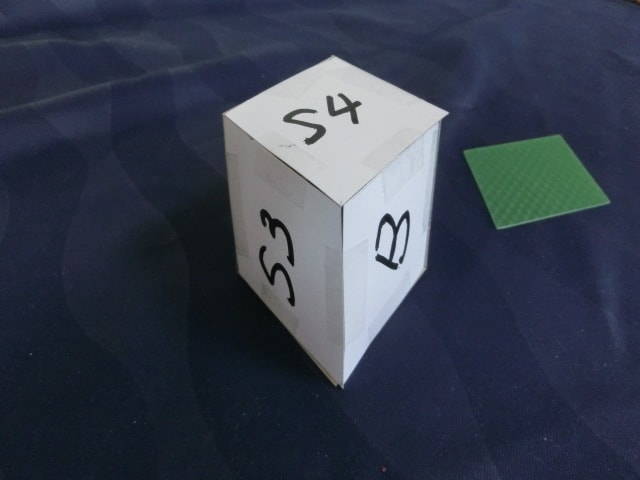我在駅
この中国語表現、じっと見ていると何となく意味は分かる。大きな始発駅みたいなものを除いて「駅」には別の漢字が使われるが、ここでは問題ではない。
日本人的には上記の表現は「私は駅にある」、または、「私は駅にいる」だろう。過去表現や未来形はどうするかは別問題だが。で、あるネット上の解説書には、この「在」と言う漢字は動詞ではなくて前置詞だと書いてあった。また、別の解説書には動詞だと書いてある場合もある。
どちらが本当なのか、と言うような問いかけは私の知っているゲルマン語系やロマンス語系の言語ではありえない事だ。日本語でもないだろう。
随分前の事だが、中国語は中原(黄河の中流域)で中国各地から集まった商売人の間での簡易言語として発達したと書いてあるのを見かけた事がある。面積が広大なため極端な方言が各地に存在し、その故に遠隔地から集まったお互い同士を唯一理解しあえるのが表意文字としての漢字なので、使用法も簡易化されたという趣旨だ。(でも、私は世界標準的な?表現を導入したくても漢字の複雑さ故に出来なかった、と思っている)
以前、仕事で台北に滞在していた時にTVを見ていて思ったことがある。大抵の場合、画面の下に字幕が漢字で出ている。これも方言の違いを埋める為だとは思うが、TVを見ていて、ふと思ったのは「漢字に過去形ってないよな」だった。
それで台湾人の友人に聞いてみた。彼の答えは、文章の何処かに過去なら過去を示す漢字があるか、あるいは文脈で判る、と言うものだった。英語で言うと、例えば:
I meet he yesterday
になる。昨日、彼に会った、の意味だ。駅で会ったと追加するなら:
I meet he station yesterday
になる。で、冒頭の表現だが、もし「在」が前置詞だと信じるなら:
I at station
になるわけで、「「私 at 駅」なら、私は駅を食べたとか、壊したとかでなく、「私は駅にいる」以外、常識的に考えられないだろう」と言う私の台湾人の友人の声が大きく聞こえてくる。
とても乱暴な言語だと思う。確かに、一定のル-ルはあるのだろうが、恐らく通常我々が親しんでいる様な文法ではないだろう。私が中国語には「文法が存在しない」と考える所以だ。逆に言うと、漢字を理解できる日本人にとって比較的覚えやすい言語でもある。あまり細かいことを覚える必要がないからだ。
更に幾つかの例を以下に示す。
日本銭真多: (日本は本当にお金を沢山持っている)
これは見れば判る、が、他の言語では動詞があるのに。。。。
是不是? (どうなの?)
「是」は英語のBE動詞に相当するが、ここでは「yes?, or, not yes?]と言っている訳だが、まあ、気持ちは分かるような気がする。でも、
問我是不是? (それを私に聞いているの?)
は「Ask I yes, or not yes?」なので、じっと考えていると、中国語の発想法がだんだんと見えて来るような気がする。
到底是不是? (つまり結局どうなの?)
この辺になると漢字の意味と運用の問題になるが、最後に歌の歌詞を見て見よう。「長崎は雨だった」の漢字バ-ジョンの一部にある:
分離、分離後、再相見、不易
句読点は判りやすくするために私が付けた。意味は明白だと思う。実は発音も非常に日本語に近くて、「ぶんり、ぶんりご、さいそうけん、ふい」と聞こえる。ピンイン表記は「ふんり、ふんりほう、さいしゃんちぇん、ふい」となっているが実際には慣れないと最初は「ぶんり、ぶんりご、さいそうけん、ふい」と聞こえる。
意味は、一度別れたら二度と会うのは難しい、だが、ここには我々が当然と思っている要素が幾つも欠落している。なので、私は中国語を今では「キャッチフレ-ズ言語」と呼び始めてる。
この中国語表現、じっと見ていると何となく意味は分かる。大きな始発駅みたいなものを除いて「駅」には別の漢字が使われるが、ここでは問題ではない。
日本人的には上記の表現は「私は駅にある」、または、「私は駅にいる」だろう。過去表現や未来形はどうするかは別問題だが。で、あるネット上の解説書には、この「在」と言う漢字は動詞ではなくて前置詞だと書いてあった。また、別の解説書には動詞だと書いてある場合もある。
どちらが本当なのか、と言うような問いかけは私の知っているゲルマン語系やロマンス語系の言語ではありえない事だ。日本語でもないだろう。
随分前の事だが、中国語は中原(黄河の中流域)で中国各地から集まった商売人の間での簡易言語として発達したと書いてあるのを見かけた事がある。面積が広大なため極端な方言が各地に存在し、その故に遠隔地から集まったお互い同士を唯一理解しあえるのが表意文字としての漢字なので、使用法も簡易化されたという趣旨だ。(でも、私は世界標準的な?表現を導入したくても漢字の複雑さ故に出来なかった、と思っている)
以前、仕事で台北に滞在していた時にTVを見ていて思ったことがある。大抵の場合、画面の下に字幕が漢字で出ている。これも方言の違いを埋める為だとは思うが、TVを見ていて、ふと思ったのは「漢字に過去形ってないよな」だった。
それで台湾人の友人に聞いてみた。彼の答えは、文章の何処かに過去なら過去を示す漢字があるか、あるいは文脈で判る、と言うものだった。英語で言うと、例えば:
I meet he yesterday
になる。昨日、彼に会った、の意味だ。駅で会ったと追加するなら:
I meet he station yesterday
になる。で、冒頭の表現だが、もし「在」が前置詞だと信じるなら:
I at station
になるわけで、「「私 at 駅」なら、私は駅を食べたとか、壊したとかでなく、「私は駅にいる」以外、常識的に考えられないだろう」と言う私の台湾人の友人の声が大きく聞こえてくる。
とても乱暴な言語だと思う。確かに、一定のル-ルはあるのだろうが、恐らく通常我々が親しんでいる様な文法ではないだろう。私が中国語には「文法が存在しない」と考える所以だ。逆に言うと、漢字を理解できる日本人にとって比較的覚えやすい言語でもある。あまり細かいことを覚える必要がないからだ。
更に幾つかの例を以下に示す。
日本銭真多: (日本は本当にお金を沢山持っている)
これは見れば判る、が、他の言語では動詞があるのに。。。。
是不是? (どうなの?)
「是」は英語のBE動詞に相当するが、ここでは「yes?, or, not yes?]と言っている訳だが、まあ、気持ちは分かるような気がする。でも、
問我是不是? (それを私に聞いているの?)
は「Ask I yes, or not yes?」なので、じっと考えていると、中国語の発想法がだんだんと見えて来るような気がする。
到底是不是? (つまり結局どうなの?)
この辺になると漢字の意味と運用の問題になるが、最後に歌の歌詞を見て見よう。「長崎は雨だった」の漢字バ-ジョンの一部にある:
分離、分離後、再相見、不易
句読点は判りやすくするために私が付けた。意味は明白だと思う。実は発音も非常に日本語に近くて、「ぶんり、ぶんりご、さいそうけん、ふい」と聞こえる。ピンイン表記は「ふんり、ふんりほう、さいしゃんちぇん、ふい」となっているが実際には慣れないと最初は「ぶんり、ぶんりご、さいそうけん、ふい」と聞こえる。
意味は、一度別れたら二度と会うのは難しい、だが、ここには我々が当然と思っている要素が幾つも欠落している。なので、私は中国語を今では「キャッチフレ-ズ言語」と呼び始めてる。















